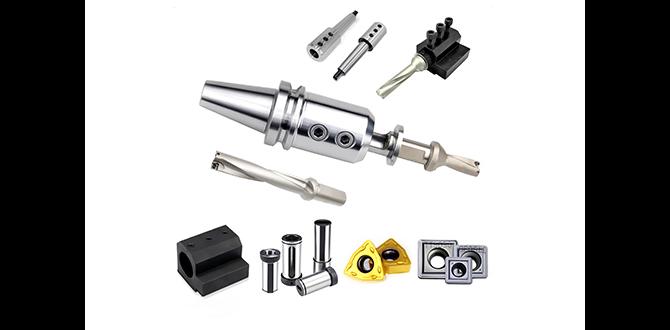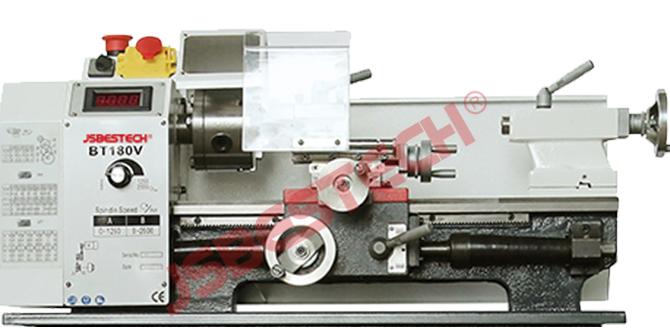Carbide end mills are indeed your best bet for clean, efficient dry cutting of fiberglass. Their superior hardness and heat resistance allow them to slice through tough composite materials without melting or premature wear, leading to smoother finishes and longer tool life.
Working with fiberglass can be a real challenge. You want that project to look sharp, but cutting through fiberglass can leave you with dusty, rough edges and frustration. It’s easy to think that any cutting tool will do, but using the wrong one can lead to melted material, broken bits, and a whole lot of mess. Don’t worry, though! Getting a clean cut in fiberglass, especially when you want to cut dry to avoid additional steps, is totally achievable. You just need to know the right tool for the job. We’re going to dive into why a specific type of end mill excels at this task and how you can achieve those perfect fiberglass cuts every single time.
Why Fiberglass is Tricky to Cut
Fiberglass, also known as glass-reinforced plastic (GRP), is a popular composite material. It’s strong, lightweight, and resistant to corrosion, making it great for everything from boat hulls to car parts and even intricate electrical enclosures. However, these same properties that make it so useful also make it difficult to cut cleanly. The material is abrasive, and the resin binder can soften and melt when subjected to heat generated by friction during cutting. This heat can quickly dull conventional cutting tools, lead to a gummy, melted mess instead of a clean cut, and generate fine, irritating dust.
The Carbide Advantage for Fiberglass
When it comes to cutting tough, abrasive, and heat-sensitive materials like fiberglass, carbide is the king. But not just any carbide tool will do. For fiberglass, you’ll want to focus on carbide end mills. Here’s why:
- Hardness: Tungsten carbide is one of the hardest materials used in cutting tools, second only to diamond. This extreme hardness allows it to slice through the glass fibers and resin without easily dulling or chipping.
- Heat Resistance: Cutting generates heat. Carbide can withstand much higher temperatures than high-speed steel (HSS) before losing its edge. This is crucial for fiberglass, where accumulated heat can melt the resin.
- Sharpness and Edge Retention: Carbide tools can be manufactured with very sharp edges and retain that sharpness for a long time, even in abrasive materials. This leads to cleaner cuts and less tear-out.
- Reduced Melting: The superior heat resistance and ability to cut quickly with sharp edges mean less heat is transferred to the material, minimizing the risk of melting the resin binder.
Choosing the Right Carbide End Mill
Not all carbide end mills are created equal, especially when it comes to cutting fiberglass dry. You need to consider a few key features to get the best results. For precise work and general fiberglass cutting, a common and highly effective choice is the carbide end mill 1/8 inch 6mm shank standard length for fiberglass dry cutting.
Key Features to Look For:
- Material: 100% Tungsten Carbide is ideal.
- Number of Flutes: For fiberglass, 2-flute or 4-flute end mills are generally recommended.
- 2-Flute: These offer better chip evacuation, which is beneficial when cutting composites that can produce a lot of fine dust. They are often preferred for their ability to handle the abrasive nature of fiberglass without clogging.
- 4-Flute: These can provide a smoother finish and are good for faster material removal in some applications, but they can sometimes have more difficulty with chip evacuation in fine, dusty materials like fiberglass, potentially leading to gumming if feeds and speeds aren’t optimized. For dry cutting in beginner scenarios, 2-flute is often the safest bet.
- Coating: While not always strictly necessary for fiberglass, coatings like TiN (Titanium Nitride) or ZrN (Zirconium Nitride) can further enhance hardness, lubricity, and heat resistance, extending tool life and improving cut quality. However, a good quality uncoated carbide is often sufficient.
- End Type: Square end mills are the most common and versatile.
- Shank Size: A 6mm shank (approximately 1/4 inch) is a very common size for hobbyist and small CNC machines, offering a good balance of rigidity and access.
- Flute Length: Standard flute lengths are usually adequate for most fiberglass cutting tasks on typical machines. Ensure the flute length is sufficient for your desired cutting depth.
Why a 1/8 Inch (3mm) or 6mm Shank is Practical
A 1/8 inch (3mm) or 6mm shank is frequently found on end mills designed for smaller CNC routers and desktop milling machines. These machines are popular with hobbyists and DIY makers. The smaller shank size is practical because:
- It fits the collets and tool holders commonly found in smaller, more accessible machines.
- It allows for finer detail work when cutting intricate shapes in fiberglass.
- It can be more cost-effective than larger diameter end mills.
Ensure you are using the correct collet size for your machine to achieve a secure grip on the shank.
Best Practices for Dry Cutting Fiberglass with a Carbide End Mill
Even with the right tool, technique matters. Here’s how to get the best results when dry cutting fiberglass:
1. Machine Setup and Material Clamping
Ensure your workpiece is securely clamped to your machine bed. Fiberglass can shift during cutting, leading to inaccurate cuts or tool breakage. Use clamps, double-sided tape, or a spoilboard to hold the material firmly in place.
2. Dust Management is Crucial
Dry cutting fiberglass produces fine, irritating dust. It’s essential to manage this.
- Dust Collection System: If your machine has a dust shoe or vacuum attachment, use it. This will capture a significant amount of the dust at the source.
- Personal Protective Equipment (PPE): Always wear a high-quality dust mask (N95 or better), safety glasses, and hearing protection. Fiberglass dust can be harmful if inhaled or if it gets into your eyes.
Refer to guidelines from organizations like the Occupational Safety and Health Administration (OSHA) for proper respiratory protection when working with dust.
3. Feeds and Speeds: The Golden Rule
This is perhaps the most important factor for a clean cut and avoiding melting. For fiberglass, you generally want to:
- Use a relatively high spindle speed (RPM): This helps the cutting edges engage the material quickly, creating chips rather than friction. For a 6mm carbide end mill, starting around 18,000-24,000 RPM is a good range, but always consult your end mill manufacturer’s recommendations or perform test cuts.
- Use a moderate to fast feed rate: This ensures you are taking a proper chip. If the feed rate is too slow, the end mill will rub rather than cut, generating heat and melting the resin. For a 6mm end mill, a feed rate of 600-1200 mm/min (approximately 24-48 inches/min) might be a starting point, but this highly depends on the specific fiberglass layup and machine rigidity.
- Take shallow depth-of-cut passes: Avoid trying to cut through the entire thickness of fiberglass in one pass. Multiple shallow passes (e.g., 0.5mm to 2mm per pass) will reduce the load on the tool, minimize heat buildup, and result in a cleaner finish.
Tip: Always perform test cuts on a scrap piece of the same material to dial in your feeds and speeds before cutting your final part.
4. Climb Milling vs. Conventional Milling
For fiberglass, climb milling is generally preferred. In climb milling, the cutter rotates in the same direction as its feed path. This tends to produce a cleaner cut with less tear-out and puts less stress on the material. Conventional milling, where the cutter rotates against the feed direction, can grab the material and lead to a rougher finish.
5. Tool Path Strategy
When using an end mill, consider your tool path. For outlines, use a “pocket” or “contour” toolpath that follows the outside of your desired shape. Ensure you account for the cutting radius of your end mill (often referred to as “tabbing” or “stock to leave” if you’re profiling edges). For internal cuts, the geometry of the end mill will define the corner radius.
Carbide End Mill Specifications for Fiberglass
To give you a practical example, let’s look at a specific type of end mill ideal for this task. A common and effective choice is:
Carbide End Mill, 1/8 inch (3mm) Shank, 6mm Cutting Diameter, Standard Length, 2 Flutes, Uncoated or TiN Coated.
While the prompt mentions a 1/8 inch shank (which is roughly 3.175mm), a 6mm shank (which is what the keyword actually specifies) is also very common. It’s important to distinguish between the shank diameter and the cutting diameter. For this discussion, we’ll focus on the 6mm shank to match the provided keyword precisely, assuming a corresponding 6mm cutting diameter for versatility, or a smaller cutting diameter like 3mm for detail work.
Let’s consider variations:
| End Mill Type | Shank Diameter | Cutting Diameter | Number of Flutes | Ideal For | Considerations |
|---|---|---|---|---|---|
| Carbide End Mill | 6mm | 3mm | 2 | Detail cutting, intricate designs in fiberglass. | Requires higher spindle speeds and precise feed rates. Good for smaller CNC machines. |
| Carbide End Mill | 6mm | 6mm | 2 | General purpose cutting, profiling, and pocketing fiberglass. | Offers a good balance for material removal and finish. Lower risk of melting than 4-flute with less precise settings. |
| Carbide End Mill | 6mm | 6mm | 4 | Faster material removal, smoother finish on some materials. | Can be more prone to clogging with fiberglass dust if not managed properly. Requires careful feed/speed tuning. |
For users with machines that accept imperial sizes, a 1/8 inch shank end mill with a 1/8 inch or 1/4 inch cutting diameter and 2 flutes would be the equivalent in tooling size. The principle remains the same: sharp, hard, and designed for efficient chip evacuation.
Common Mistakes to Avoid When Cutting Fiberglass
Even with the right tools, beginners can fall into common traps:
- Using dull tools: This is the number one cause of melting and poor finishes. A dull tool rubs, generates heat, and tears material instead of cutting it.
- Feeding too slowly: If your feed rate is too low, the end mill will rub against the material.
- Cutting too deep (“taking too big a bite”): This overloads the tool, increases heat, and can lead to chipping or breakage. Always use multiple shallow passes.
- Not clamping the material securely: Vibration and movement during cutting lead to errors and potential tool failure.
- Ignoring dust control: This is a health hazard and can also interfere with your cutting process by causing the bit to heat up if dust builds up around it.
- Using inappropriate speeds: Too slow an RPM can cause rubbing and melting; too fast an RPM without adequate feed can also lead to excess heat and premature wear.
Alternatives (and Why They’re Usually Not Ideal for Dry Cutting)
While carbide end mills are the go-to, what about other options?
- High-Speed Steel (HSS) End Mills: HSS is less hard than carbide and loses its temper (becomes dull) much faster when cutting abrasive materials like fiberglass. They also don’t tolerate heat as well, increasing the risk of melting the resin. They are generally not recommended for prolonged fiberglass cutting, especially dry.
- Abrasiv_e Router Bits: If you are using a CNC router, specialized router bits designed for composites might be an option. However, for precision milling on a mill, end mills are the appropriate tool. Some diamond grit or specialized carbide bits exist for composites, akin to what is used in stone cutting, but these are often very expensive and overkill for many DIY applications.
- Saw Blades or Other Rotary Cutters: While abrasive cut-off wheels or specialized saw blades can cut fiberglass, they are not suitable for the precision and shape flexibility offered by an end mill on a milling machine or CNC router.
For controlled cuts, pocketing, and profiling on a mill or CNC router, the carbide end mill remains the superior choice, particularly for dry cutting applications seeking ease and efficiency.
When to Consider Wet Cutting
While this article focuses on dry cutting, it’s worth noting that for some high-volume production or extremely thick composite materials, wet cutting (using a coolant or lubricant) can be beneficial. Coolant helps to:
- Reduce heat buildup, further minimizing melting.
- Wash away chips and dust, preventing them from clogging the flutes.
- Extend tool life by keeping the cutting edge cooler.
However, wet cutting requires a different setup (coolant delivery system, appropriate collection and disposal) and isn’t practical for all home workshop environments. The beauty of using a proper carbide end mill is that it makes dry cutting a viable and often preferred method for hobbyists.
Finding the Right Tools and Resources
When purchasing your carbide end mill, look for reputable tool suppliers. Many online machining supply stores offer specialized routing bits and end mills for plastics and composites. For example, companies like McMaster-Carr, KBC Tools, and even specialized CNC parts retailers often carry tools suitable for fiberglass. Always check product descriptions for compatibility with composite materials.
For detailed information on machining composite materials, resources from organizations like the CompositesWorld or technical guides from material manufacturers can provide deeper insights into material properties and machining parameters.
Additionally, consulting the documentation for your specific CNC machine or mill is essential. Your machine’s manufacturer may have recommended settings or tool types for cutting various materials.
Frequently Asked Questions
What is the best type of end mill for cutting fiberglass?
The best type of end mill for cutting fiberglass, especially dry, is a carbide end mill. Its hardness and heat resistance prevent melting and premature wear.
Can I use a regular end mill for fiberglass?
While some basic cutting is possible, regular High-Speed Steel (HSS) end mills are not ideal. They dull quickly, generate excessive heat leading to melting, and produce a rougher finish compared to carbide.
Why is dry cutting preferable when possible?
Dry cutting eliminates the need for a coolant system, simplifies cleanup, and is often more convenient for hobbyists and smaller workshops. Using the right carbide end mill makes it efficient and clean.
What happens if I use the wrong tool or settings for fiberglass?
You’ll likely experience melted resin, a gummy mess, rough edges, tool breakage, and rapid tool wear. It can also generate a significant amount of irritating dust.
How many flutes should my end mill have for fiberglass?
For fiberglass, 2-flute or 4-flute carbide end mills are common. A 2-flute end mill generally offers better chip evacuation, which is beneficial for the fine dust produced by fiberglass, making it a safe and effective choice for dry cutting.
What are typical feeds and speeds for a 6mm carbide end mill in fiberglass?
You’ll typically want a high spindle speed (18,000-24,000 RPM) and a moderate to fast feed rate (600-1200 mm/min or faster, depending on rigidity). Always take shallow depth-of-cut passes (0.5mm-2mm). It’s crucial to perform test cuts to find the optimal settings for your specific machine and material.
What safety precautions are essential when cutting fiberglass?
Always wear appropriate Personal Protective Equipment (PPE), including a dust mask (N95 or better), safety glasses, and hearing protection. Ensure good dust management and ventilation.
Conclusion
Cutting fiberglass cleanly and efficiently, especially when you prefer dry cutting, hinges on selecting the right tool. The carbide end mill, particularly a 2-flute variant with a suitable shank (like the 6mm or 1/8 inch), stands out as the premier choice. Its inherent hardness and heat resistance allow it to slice through the abrasive glass fibers and resin without succumbing to melting or premature dulling. By understanding




